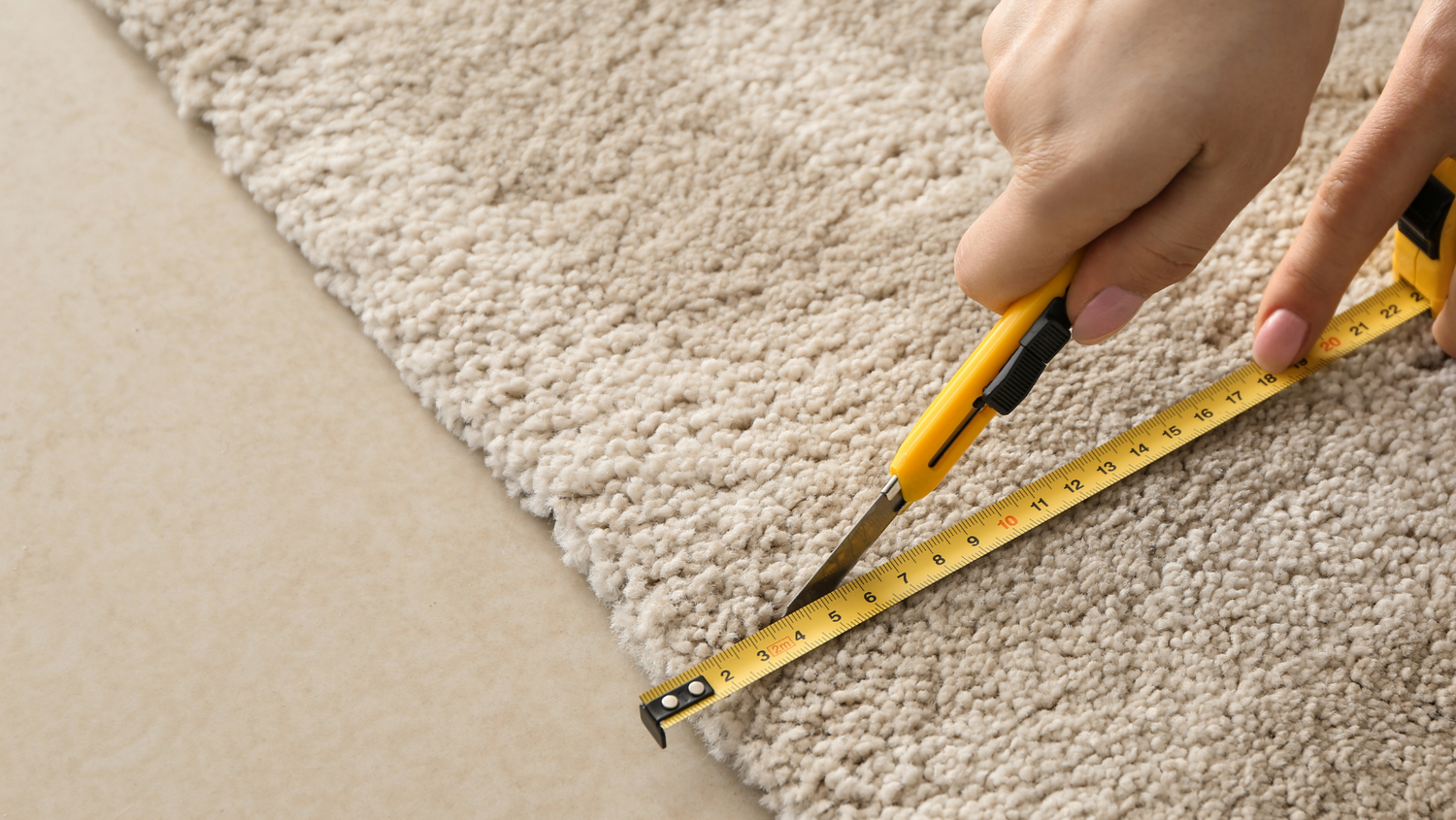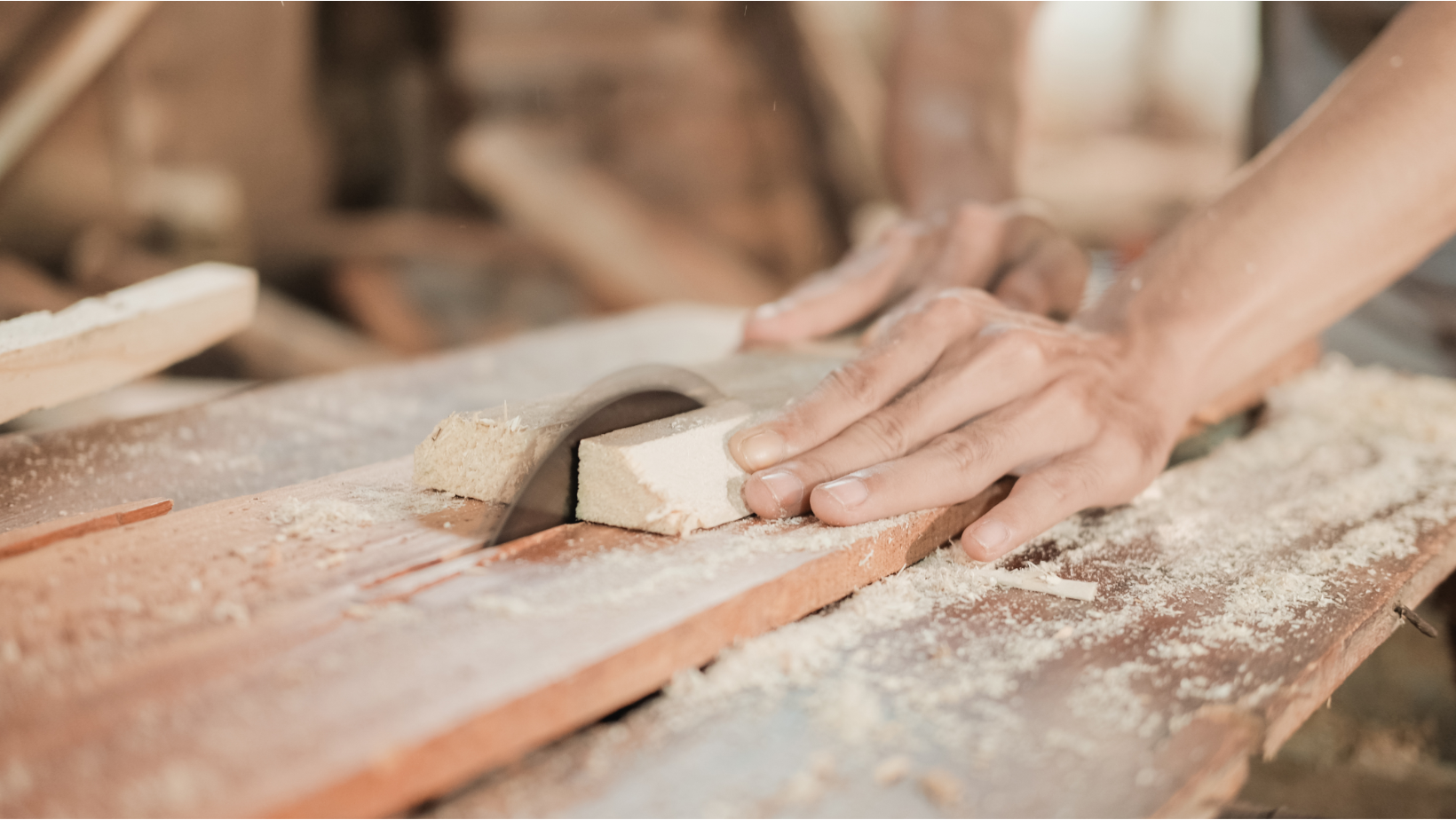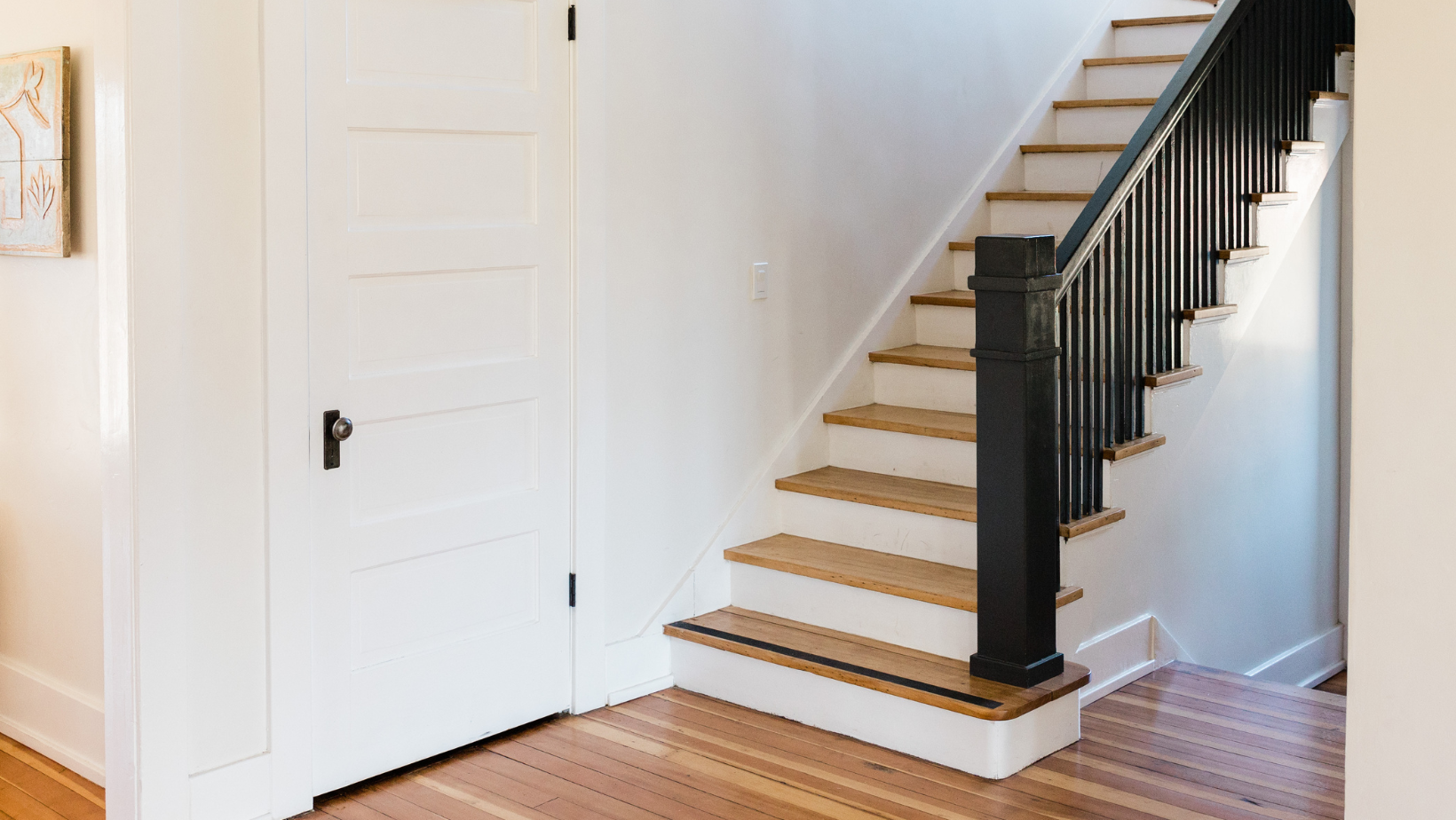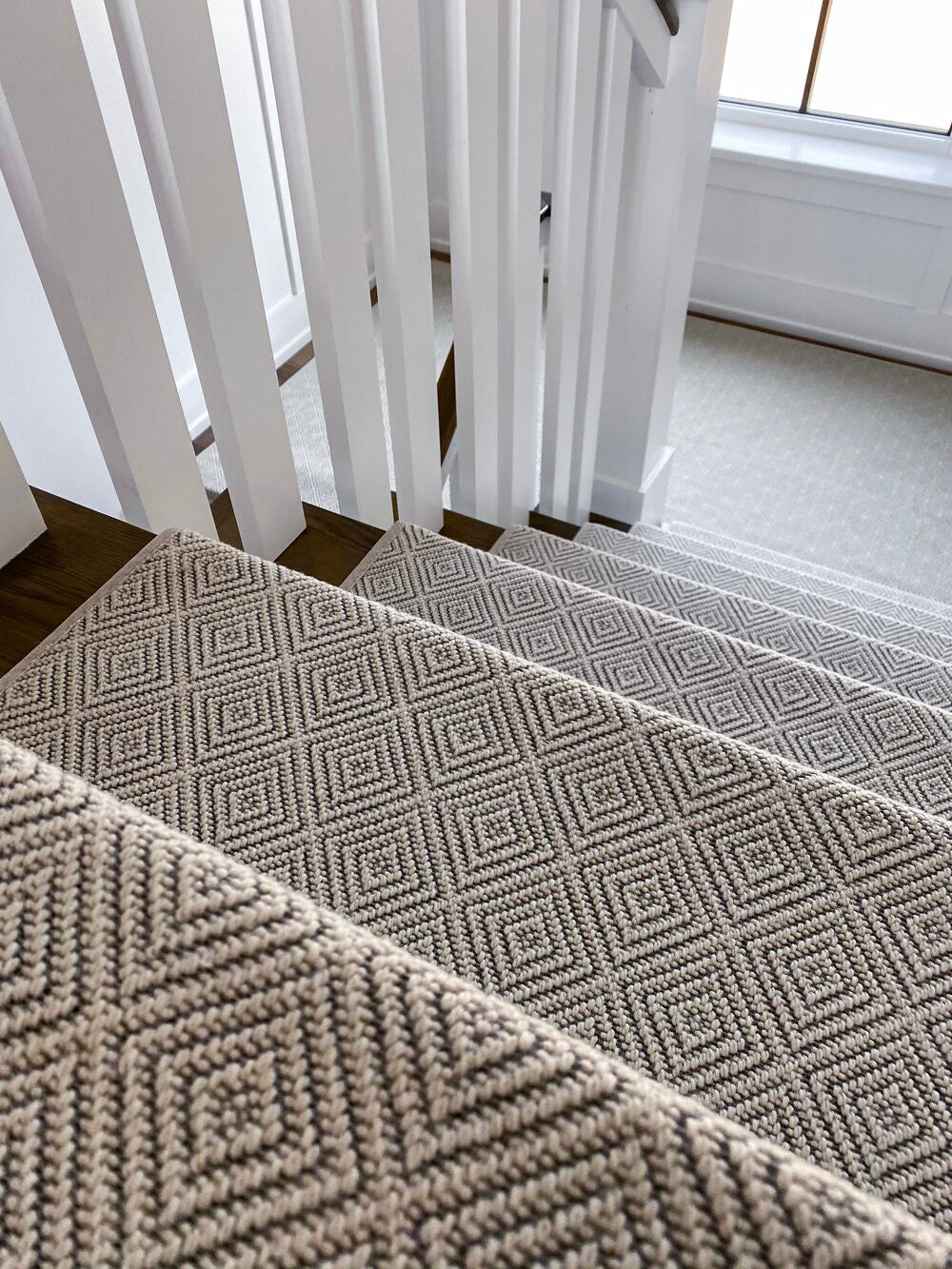A well-designed staircase enhances both safety and style in your home.
Making your own covers can be very rewarding.
To do so, measure your stairs, choose durable materials like carpet stair treads, cut them to size, and secure them with non-slip backing.
This DIY upgrade improves traction, reduces noise, and adds comfort, making your stairs safer for family and pets.
By following the right steps, you can successfully make your own stair tread covers to match your home’s aesthetic and enhance durability.
This guide will walk you through material selection, installation techniques, and expert tips for long-lasting results.
Whether you prefer a sleek, modern look or a cozy, carpeted finish, you’ll find the best approach to customize your staircase.
Why Install Stair Tread Covers?
Adding stair tread covers to your home serves multiple purposes beyond aesthetics.
Whether you have young children, elderly family members, or pets, ensuring a safe and slip-resistant staircase is crucial.
Here are some benefits of installing stair tread covers:
1. Enhanced Safety
Bare stairs, especially hardwood or tile, can be slippery, increasing the risk of falls.
Properly installed stair tread covers with non-slip backing provide extra grip and security.
2. Noise Reduction
Hard stairs can create loud footsteps, especially in multi-story homes.
Carpet stair treads absorb sound, making the home quieter.
3. Comfort Underfoot
Walking on hard surfaces for long periods can be uncomfortable.
Soft materials like carpet or rubber add cushioning, making your stairs more comfortable.
4. Improved Aesthetic Appeal
Stair tread covers come in various materials and colors, allowing you to enhance your home’s decor while protecting your stairs from scratches and wear.
5. Increased Durability
High-traffic areas, like staircases, are prone to damage over time.
Stair tread covers act as a protective layer, extending the life of your stairs.
Steps to Make Stair Tread Covers
Creating your own stair tread covers is a cost-effective and customizable solution for your home.
Follow these steps for a seamless installation:
1. Measure Your Stairs
Start by measuring the width and depth of each stair.
For a uniform look, ensure all measurements are consistent.
This step prevents uneven treads, which could be a tripping hazard.
2. Choose Your Material
The material you select should match your home’s design and functional needs.
Popular choices include:
-
Carpet: Soft, slip-resistant, and available in various colors and patterns.
-
Rubber: Ideal for high-traffic areas and outdoor stairs due to its durability and slip resistance.
-
Vinyl: Modern and easy to clean, though it lacks the cushioning of carpet.
-
Heavy-Duty Fabric: Adds texture and grip while maintaining a stylish appearance.
3. Cut the Material
Use a sharp utility knife or heavy-duty scissors to cut your material to the correct size.
Ensure the edges are clean and even for a professional look.
4. Attach Non-Slip Backing
If your chosen material does not already have a non-slip surface, apply a non-slip backing or adhesive strips.
This step is crucial for keeping the treads in place and preventing accidents.
5. Secure the Covers
Use double-sided carpet tape, hook-and-loop strips, or strong adhesive to attach the covers securely.
If you prefer a removable option for easy cleaning, opt for a temporary adhesive.
How to Choose the Best Material for Stair Tread Covers
Choosing the right material is essential to ensure durability, safety, and aesthetic appeal.
Here’s a closer look at the pros and cons of different stair tread cover materials:
1. Carpet
Carpet stair treads are one of the most popular choices due to their comfort and noise reduction.
They come in a variety of textures, colors, and patterns to match your home decor.
-
Pros: Soft, reduces noise, slip-resistant.
-
Cons: Requires regular maintenance, can trap dust and allergens.
2. Rubber
Rubber stair treads are perfect for homes with high foot traffic or outdoor staircases.
-
Pros: Durable, waterproof, slip-resistant.
-
Cons: Limited design options, may not blend with all interiors.
3. Vinyl
Vinyl stair treads offer a sleek and modern look while being easy to clean.
-
Pros: Low maintenance, affordable, durable.
-
Cons: Less cushioning, not as slip-resistant as carpet or rubber.
4. Natural Fiber Carpets (Wool, Sisal, Jute)
These eco-friendly materials add a luxurious touch to staircases while being highly durable.
-
Pros: Sustainable, elegant, long-lasting.
-
Cons: Higher cost, requires more upkeep.
5. Synthetic Fiber Carpets (Nylon, Polyester, Olefin)
A more affordable alternative to natural fibers, synthetic carpets offer stain resistance and durability.
-
Pros: Budget-friendly, stain-resistant, easy to clean.
-
Cons: May wear down faster in high-traffic areas.
How to Make Your Own Non-Slip Stair Treads Without Professional Installation
If you want to enhance stair safety without hiring a professional, here are a few simple methods to make your stair treads non-slip:
1. Apply a Non-Slip Coating
For wooden or tiled stairs, applying a clear non-slip coating or varnish with added grit can significantly increase traction.
2. Use Anti-Slip Tape
Adhesive anti-slip tape is a quick and effective solution for preventing slips.
It’s available in various colors and transparencies to blend with your stairs.
3. Install Rubber Stair Mats
Cut rubber mats to fit each stair tread and attach them securely with adhesive.
This method works well for both indoor and outdoor stairs.
4. Add Grip Pads
Peel-and-stick grip pads offer a low-profile solution to increase stair safety without altering the aesthetic appeal of your home.
What to Cover Stair Treads With for Maximum Safety and Style?
Your choice of stair tread covering should balance safety and design.
Here are some common options:
-
Carpet Treads: Ideal for homes with children and pets.
-
Rubber Treads: Best for outdoor or commercial staircases.
-
Vinyl Treads: Great for modern interiors with easy maintenance.
-
Wood Inserts: Aesthetic and durable but may require additional grip solutions.
Why Proper Installation of Stair Tread Covers Matters
Installing stair tread covers correctly ensures they remain secure and effective.
Poorly installed treads can slip, creating a bigger hazard than bare stairs.
To avoid issues, ensure:
-
Even Measurements: Uneven treads can create tripping hazards.
-
Strong Adhesion: Use appropriate adhesives to keep covers in place.
-
Proper Cleaning: Regular maintenance extends the life of your stair treads.
Stepping It Up
DIY stair tread covers are an excellent way to improve both the safety and style of your home.
By selecting the right materials and following proper installation methods, you can create stair treads that are not only functional but also complement your home’s decor.
If you prefer professionally crafted, high-quality stair treads, that are easy to install, Oak Valley Designs offers luxurious, customizable options designed for safety and elegance.
Contact Oak Valley Designs for Expert-Quality Stair Treads
-
Website: https://oakvalleydesigns.com/
-
Phone: 706.331.0315
-
Email: info@oakvalleydesigns.com
-
Address: 30 River Ct SW Bldg E Cartersville, Ga 30120




